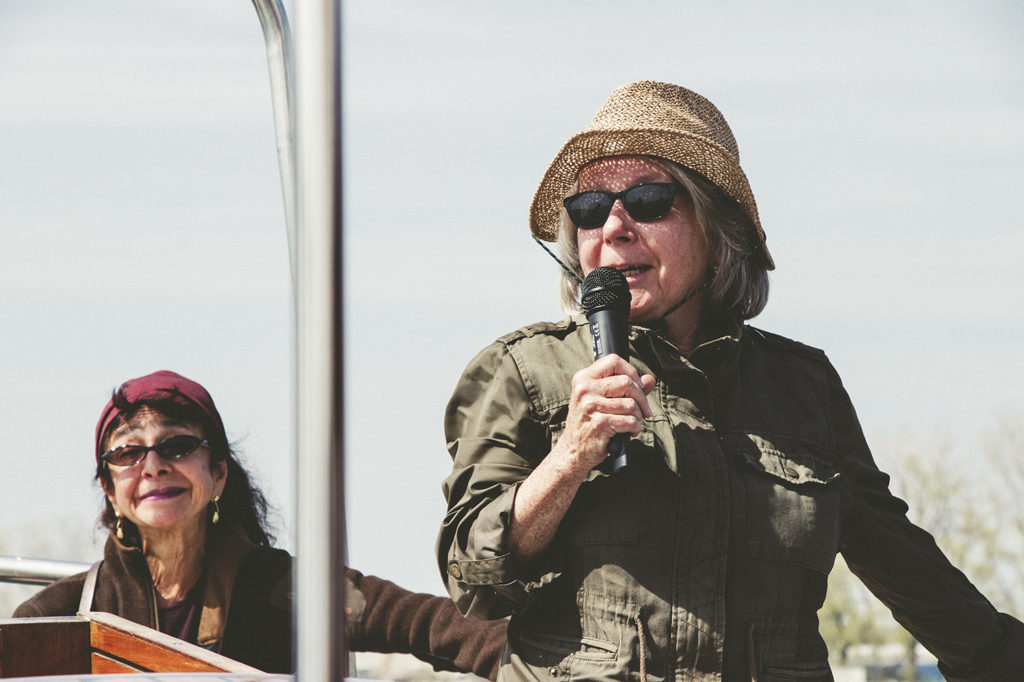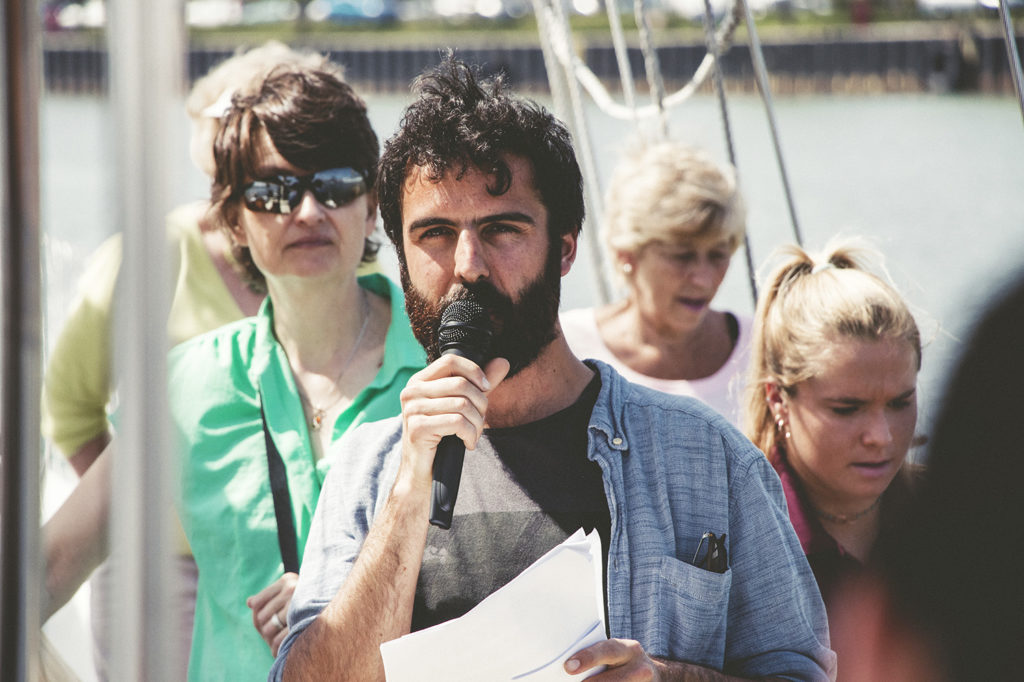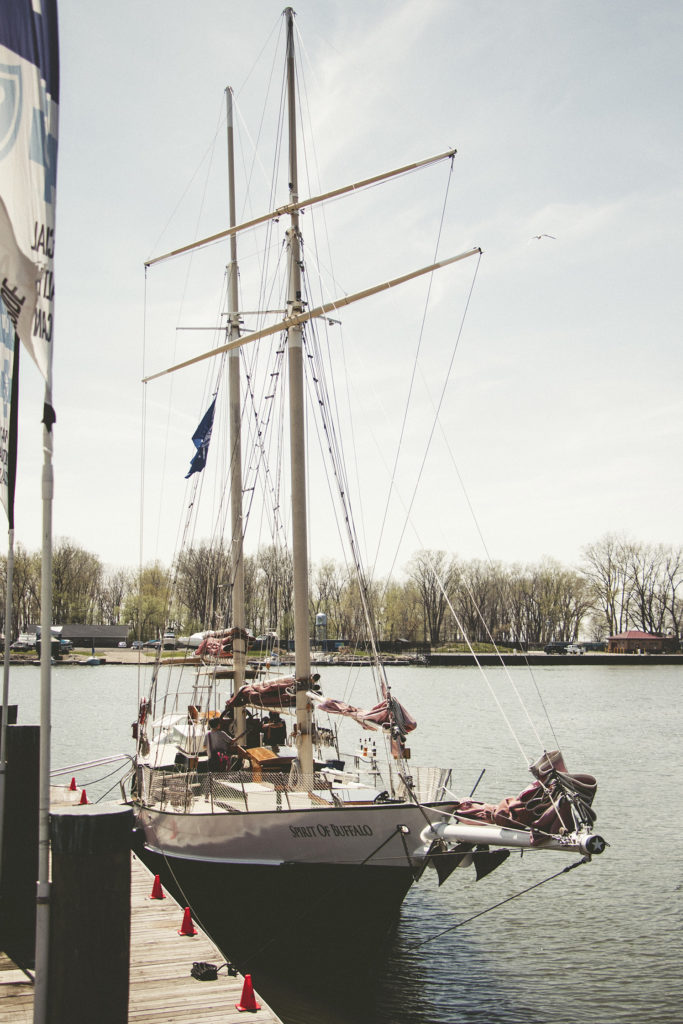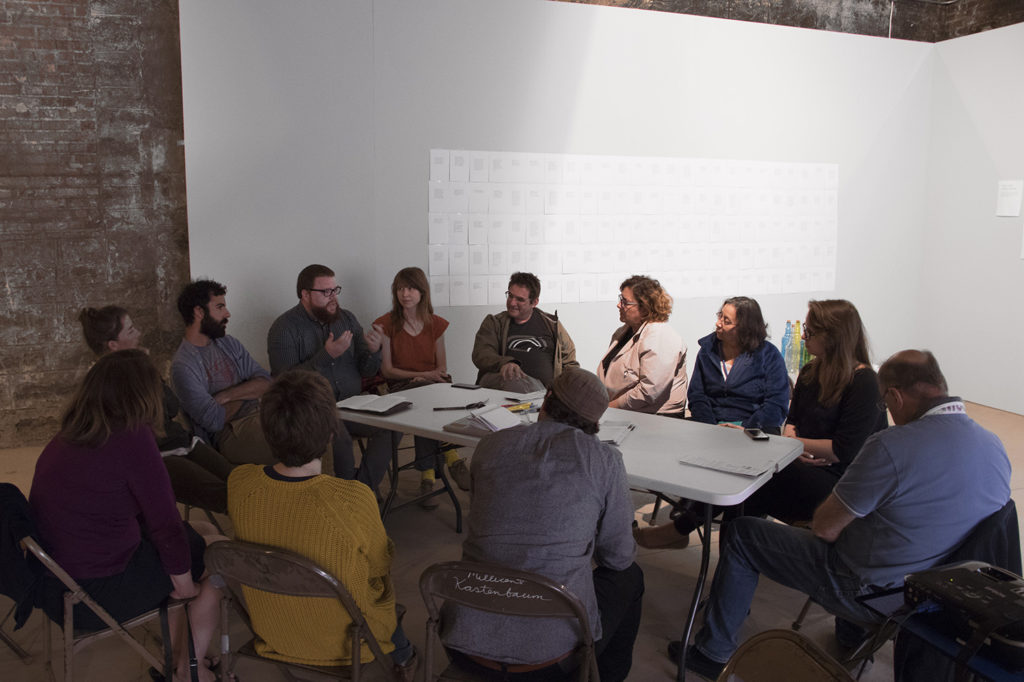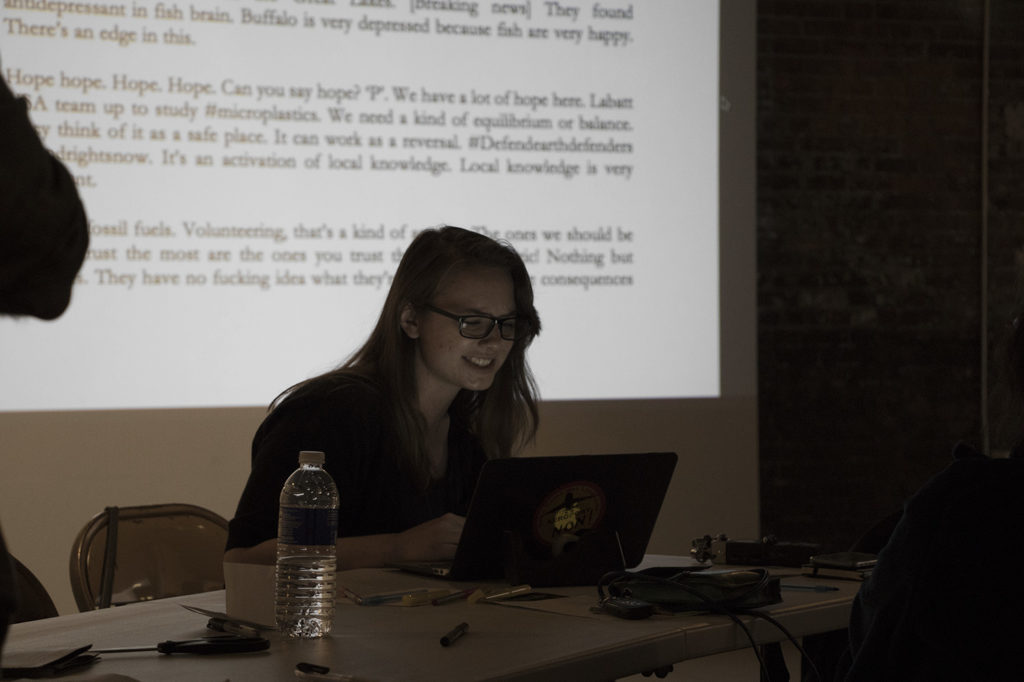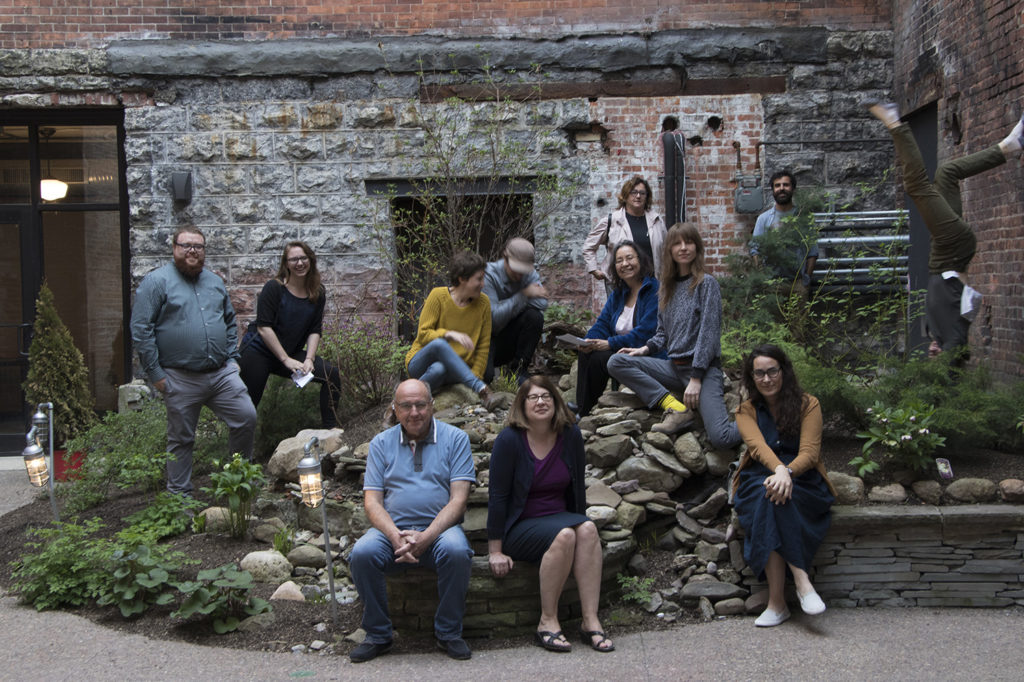A tale as a tool – Buffalo/Niagara
Indeterminacy festival, Buffalo (NY), 2018

Invited by the Techne Institute of University at Buffalo (UB), Sandrine Teixido and Aurélien Gamboni developed with independent curator Stéphane Verlet-Bottéro an «investigation office» for the Indeterminacy Festival. During this research residency, they explored the past and present environmental transformations in Buffalo and the Great Lakes, close to the famous Niagara Falls that inspired Edgar Poe in some of his most telling descriptions of the maelström.
The complex ecology of this region, severely affected by a now declining industrial heritage, appears as space of cohabitation between many different contradictory forces, and different potential becomings. 40 years after the Love Canal disaster – a housing project neighborhood massively contaminated by chemical waste, which led to the rise of a national environmental movement in the USA in the late 1970s –, the inequality of exposure to industrial pollution and access to potable water are still major concerns for the most segregated communities. The movements engaged for a «just transition» collide with both the fossile-driven advocates of «business as usual» and the promoters of «green growth». Unexpected becomings emerge, as contaminated lands become crucial nature protection sites for the birds migrating from the Arctic to the Amazon, and as community-based research initiatives associate the Indigenous knowledge of the First Nations with those of modern sciences around environmental justice and water politics.
Photographs: Petros Chytiris
__________
FULL PROGRAM
Do you hear anything? Do you see any change in the water?
Boat tour – Departure from Central Wharf at Canalside
16 May, 3–5pm
In Poe’s short story ‘A Descent into the Maelström’, a fisherman leads the narrator onto a cliff to behold the whirlpool. From this point of view, he tells a story that no one ever believed: how he went down and escaped the great whirl, by observing and analyzing the trajectories of objects caught in the vortex …
This collective research experiment takes the form of a 2-hour journey across Lake Erie and Buffalo waterways, on board the beautiful sailboat Spirit of Buffalo. We invite witnesses from all backgrounds – inhabitants, researchers, campaigners, community members – to share their experiences and knowledge, whether specialized or based on daily life observations. As climate disruption and ecological damage tend to intensify, the vastness and diversity of their effects implies that everybody, in their own place, can become a witness. For instance, highway drivers noticing fewer insects caught on their windshield are echoed by entomologists’ extinction studies.
All are invited to come and share in the context of this mobile assembly. Gathered around the powerful image of the maelström, we will rely on Poe’s story as a tool to guide our discussions. How do we relate to transformations in the landscape? How are we emotionally affected by these changes? What does it mean to observe a phenomenon from the edge? and to be part of it at the same time?
The vortex rescripted
Cass Project
18 May, 5:30–7:30pm
In this writing workshop, Nikolaus Wasmoen, visiting assistant professor in Digital Scholarship and English at Buffalo University, will propose a new plot to rewrite Poe’s ‘A Descent into the Maelström’ together with the public. Conjuring references to vortices and maelstroms from writers Wyndham Lewis, Ezra Pound, Hugh Kenner, Toni Morrison, we will discuss how, in addition to environmental issues such as the climate crisis, the story provides tools to model social media as a structured flow. The workshop will result in a new script, written collectively and in real time.
The investigation office
Duende Building
19 May, 3–8pm
The Maelström investigation office will gather drawings, notes, prints, cartographies, transcripts and materials collected by the artistic trio during their inquiry into environmental perturbations and adaptations in Buffalo. This afternoon will be the chance to gather the persons interviewed during the research residency and invite the public to exchange and further contribute to the research process.
__________
With the support of NA!Project








